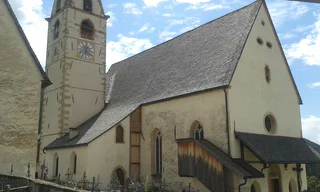
1/2
Parish church of Assumption
Meltina/Mölten, Mölten/Meltina, Bolzano/Bozen and environs
| Bolzano a jeho okolí vám nabízejí bohatou historii a kulturní zážitky. Přijďte a objevte všechno, co tento region nabízí. |

1/2
Meltina/Mölten, Mölten/Meltina, Bolzano/Bozen and environs

1/2
Meltina/Mölten, Mölten/Meltina, Bolzano/Bozen and environs

Meltina/Mölten, Mölten/Meltina, Bolzano/Bozen and environs

1/2
Vadena/Pfatten, Bolzano/Bozen and environs

S. Maddalena/St. Magdalena - Bolzano/Bozen, Bolzano/Bozen, Bolzano/Bozen and environs

1/5
Firmiano/Sigmundskron, Bolzano/Bozen, Bolzano/Bozen and environs

1/2
Laives/Leifers, Bolzano/Bozen and environs

La Costa/Seit, Laives/Leifers, Bolzano/Bozen and environs

S. Genesio Atesino/Jenesien, Jenesien/San Genesio Atesino, Bolzano/Bozen and environs

1/5
Bolzano Centro/Bozen Zentrum, Bolzano/Bozen, Bolzano/Bozen and environs

1/5
Salonetto/Schlaneid, Mölten/Meltina, Bolzano/Bozen and environs

Gries/Gries, Bolzano/Bozen, Bolzano/Bozen and environs

Pineta di Laives/Steinmannwald, Laives/Leifers, Bolzano/Bozen and environs

Cologna/Glaning, Jenesien/San Genesio Atesino, Bolzano/Bozen and environs

1/3
Bolzano Centro/Bozen Zentrum, Bolzano/Bozen, Bolzano/Bozen and environs

1/4
S. Genesio Atesino/Jenesien, Jenesien/San Genesio Atesino, Bolzano/Bozen and environs

1/4
Bolzano Centro/Bozen Zentrum, Bolzano/Bozen, Bolzano/Bozen and environs

1/2
Bolzano Centro/Bozen Zentrum, Bolzano/Bozen, Bolzano/Bozen and environs

Meltina/Mölten, Mölten/Meltina, Bolzano/Bozen and environs

1/8
Bolzano Centro/Bozen Zentrum, Bolzano/Bozen, Bolzano/Bozen and environs

1/3
Pietrarossa/Rotwand, Ritten/Renon, Bolzano/Bozen and environs

1/2
Pietrarossa/Rotwand, Ritten/Renon, Bolzano/Bozen and environs

Bolzano Centro/Bozen Zentrum, Bolzano/Bozen, Bolzano/Bozen and environs

1/3
Caldaro Campi al lago/Kalterer Klughammer, Vadena/Pfatten, Bolzano/Bozen and environs

S. Genesio Atesino/Jenesien, Jenesien/San Genesio Atesino, Bolzano/Bozen and environs

Don Bosco/Don Bosco, Bolzano/Bozen, Bolzano/Bozen and environs

Verschneid/Frassineto, Mölten/Meltina, Bolzano/Bozen and environs

1/8
Bolzano Centro/Bozen Zentrum, Bolzano/Bozen, Bolzano/Bozen and environs

1/4
Cologna/Glaning, Jenesien/San Genesio Atesino, Bolzano/Bozen and environs

Nobls/Nobls, Jenesien/San Genesio Atesino, Bolzano/Bozen and environs